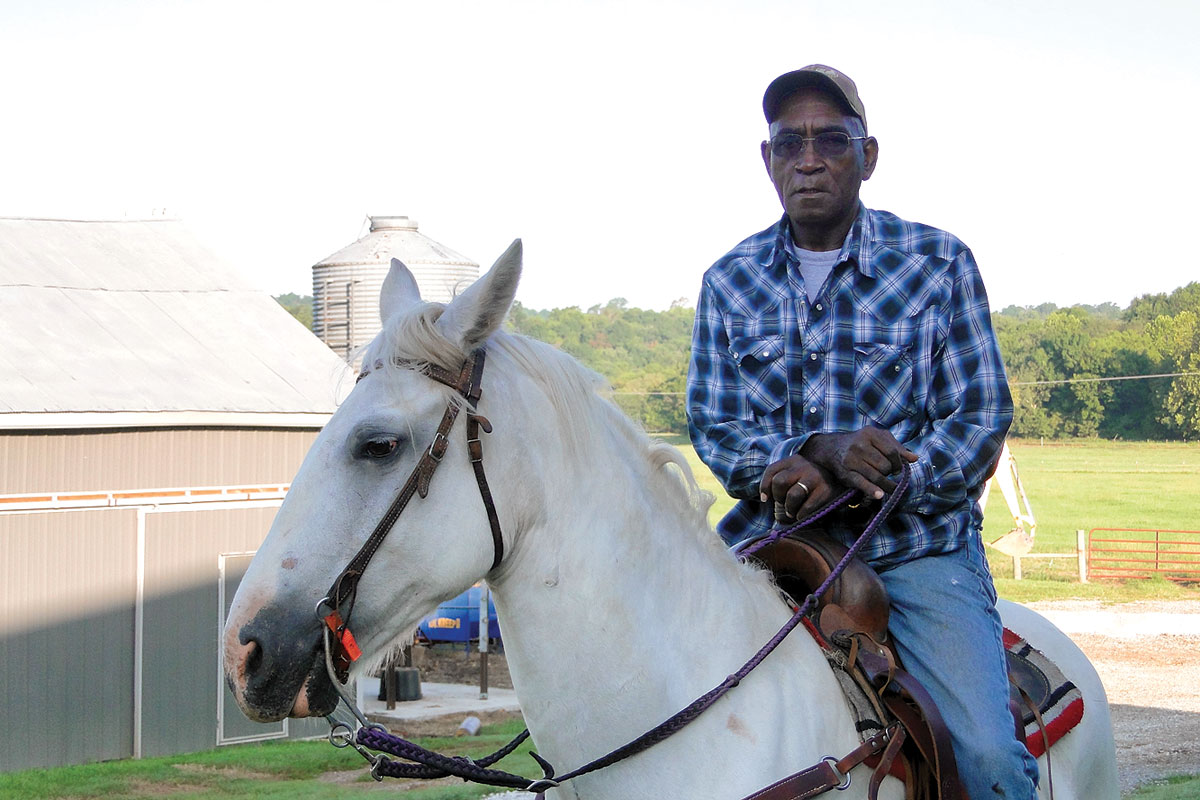
At the age of 83, Ed Wallace recalls how agriculture has changed since he was a young man
If you’re traveling through Farmington, Ark., you might see a bright red Honda three wheeler with Ed and Verna Wallace tooling around town or touring the countryside.
Ed Wallace was born in Union Church, Miss. His dad had a 160-acre owned and rented farm where they raised cattle, and crops such as corn and cotton. Like so many farms of the era, they also had chickens, hogs, goats, horses and a large garden.
When Ed was only 5, he fell off a little black mare named Della, who began to step on his stomach but immediately pulled her weight so she didn’t hurt him. That began Ed’s lifelong love affair with horses. He started roping at 17 and joined neighborhood rodeos, occasionally riding a bull.
“I learned to ride a wild Jack, and if you can do that, you can ride anything,” Ed try to bring up to first column.
His interest in rodeo began with Bill Maisie. Bill was breaking horses on a local farm where Ed was working. Ed was amazed when he saw Bill rope a colt from the back of a pickup truck. Then Bill invited Ed to practice with him and his friends, and he still rides occasionally.
Ed’s childhood was full of farm chores shared by six boys and six girls. Ed ate breakfast only after he took care of the horses and mules his dad used with the crops.
Ed’s wife Verna was also raised on a farm but in Moro, Ark., which is about 50 miles from Memphis. She was one of 12 children and mainly helped take care of the youngsters. Another of her tasks, however, was to milk their cow. Unfortunately the cow didn’t like her and tried to kick her every time she wanted to milk. Her father solved that problem in a hurry.
Verna was by his side, and when the cow was going to kick Verna as she started to milking, her father punch the ornery cow so hard in the side she almost fell over. From that day on Verna could milk that cow, although nobody else but her and her dad could get near her.
Ed and Verna met through a friend who gave Verna Ed’s phone number while he was driving trucks cross country. After they talked, she invited him for dinner, serving some of his favorites: candied yams, peas, greens and homemade cornbread. Unfortunately, he was tired from having driven straight through from Grand Junction, Colo., to Arkansas and fell asleep on the couch.
The couple, however connected deeply and felt God had brought them together. They married after their second date. That was 13 years ago.
Three years ago Ed’s job with Pick-It Construction out of Fayetteville expanded to include working with cattle, frequently from horseback.
Ironically, when Ed needs to rope a calf for his employer he does so from the back of a pickup.
“Working with cattle and horses is a hobby I love and now get paid for,” Ed said. “The changes in farming and ranching from when I started as a kid to now is like the difference between day and dark.”
Ed’s father Sylvester started farming with mules and eventually got a small tractor with a two-row planter. Shaking his head, Ed explained that planters now go up to 24 rows, something people never would’ve thought possible years ago.
Land management has changed considerably as well. According to Ed, years ago fertilizing and weed control were pretty much left to nature. Now people fertilize, spray for weeds, and brush hog to maximize land usage.
Ed remembers when all calves sold for the same amount of money. Now, because of careful breeding and the use of registered animals, different calves can sell for vastly different prices and purposes. Cattle are more muscled with more usable meat with register cattle even having a ranking list of important genetic characteristics. Another important change is in temperament. Ed explained that when he was a kid, an old cow chased him every day when he went to school, though his cousins always came to his rescue.
“A couple of the animals I work with today don’t like being penned up, they don’t try to run us over,” Ed said. “Mean animals are generally culled so cattle temperament keeps improving.”
A final important change in the cattle industry has been with feed. When Ed was young, soybean meal or cottonseed meal were mixed with salt. Now protein and fat content are carefully controlled and lead to better, hardier, and meatier animals.
“The Lord’s given me good health, and while the doctor has suggested I might slow down a bit, I really don’t plan on doing so. I love my life and plan to live it fully,” Ed said.






